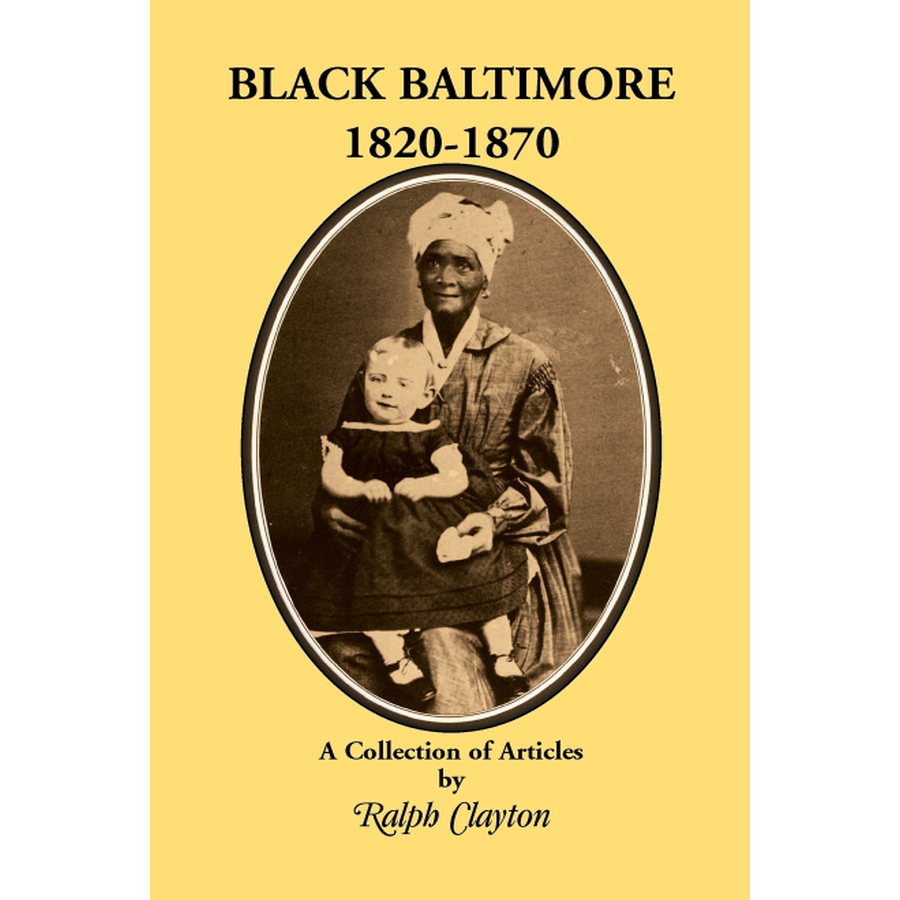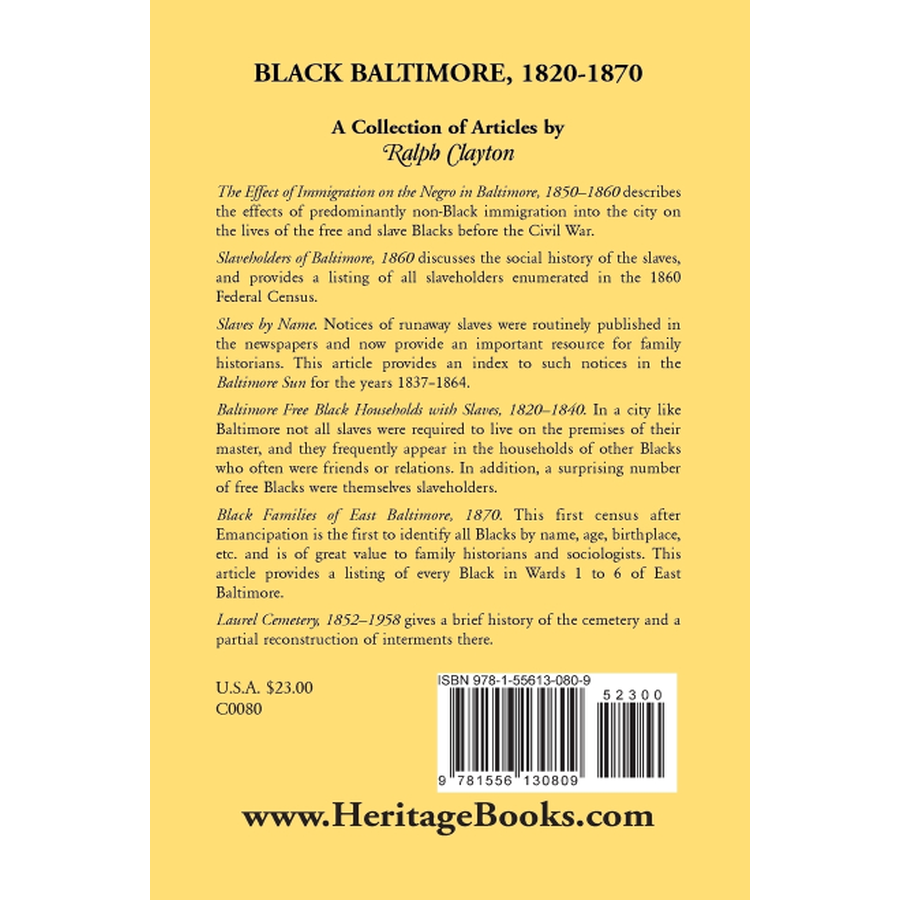Black Baltimore, 1820-1870
Couldn't load pickup availability
The Effect of Immigration on the Negro in Baltimore 1850-1860 describes the effects of predominantly non-Black immigration into the city on the lives of the free and slave Blacks before the Civil War.Slaveholders of Baltimore, 1860 discusses the social history of the slaves, and provides a listing of all slaveholders enumerated in the 1860 Federal Census.Slaves by Name. Notices of runaway slaves were routinely published in the newspapers and now provide an important resource for family historians. This article provides an index to such notices in the Baltimore Sun for the years 1837-1864.Baltimore Free Black Households with Slaves, 1820-1840. In a city like Baltimore not all slaves were required to live on the premises of their master, and they frequently appear in the households of other Blacks who often were friends or relations. In addition, a surprising number of free Blacks were themselves slave holders.Black Families of East Baltimore, 1870. This first census after Emancipation is the first to identify all Blacks by name, age, birthplace, etc. and is of great value to family historians and sociologists. This article provides a listing of every Black in Wards 1 to 6 of East Baltimore.Laurel Cemetery, 1852-1958 gives a brief history of the cemetery and a partial reconstruction of interments there.
Ralph Clayton
(1987), 2011, 5.5" x 8.5", paper, index, 208 pp.
ISBN: 9781556130809
101-C0080

